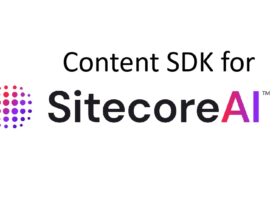In recent years, the evolution of React Server Components (RSCs) has signaled a dramatic shift in the way developers approach front-end architecture. By moving key rendering tasks to the server, RSCs promise not only to reduce the size of client-side JavaScript bundles but also to improve initial load times and overall user experience. This article […]
Development
Migrating React from version 18 to 19
React 19 was released on 25 April 2024 and it is based out of React 18. This release introduces major improvements and removes some features to enhance developer experience and application performance. Migrating is a straightforward approach, but you need to watch for removed features. In this blog, I share my experience in migrating React […]
Getting Started with Python for Automation
Automation has become a core part of modern work, allowing teams to reduce repetitive tasks, save time, and improve accuracy. Whether it’s generating weekly reports, organizing files, processing large amounts of data, or interacting with web applications, automation helps individuals and companies operate more efficiently. Among all programming languages used for automation, Python is one […]
Is PHP Dead? A 2025 Reality Check
For years, developers have debated whether PHP is on its way out. With newer languages gaining traction, the question persists: Is PHP dead? The reality is more complex. PHP remains a cornerstone of web development, but its role has shifted as competitors emerge. PHP by the Numbers 74% of websites with a known server-side language […]
Lightning Web Security (LWS) in Salesforce
What is Lightning Web Security? Lightning Web Security (LWS) is Salesforce’s modern client-side security architecture designed to secure Lightning Web Components (LWC) and Aura components. Introduced as an improvement over the older Lightning Locker service, LWS enhances component isolation with better performance and compatibility with modern web standards. Key Features of LWS Namespace isolation: Each Lightning […]
Salesforce Marketing Cloud + AI: Transforming Digital Marketing in 2025
Salesforce Marketing Cloud + AI is revolutionizing marketing by combining advanced artificial intelligence with marketing automation to create hyper-personalized, data-driven campaigns that adapt in real time to customer behaviors and preferences. This fusion drives engagement, conversions, and revenue growth like never before. Key AI Features of Salesforce Marketing Cloud Agentforce: An autonomous AI agent that helps […]
Salesforce Custom Metadata getInstance vs SOQL: Key Differences & Best Practices.
Salesforce provides powerful features to handle metadata, allowing you to store and access configuration data in a structured manner. In this blog, we explore Salesforce Custom Metadata getInstance vs SOQL—two key approaches developers use to retrieve custom metadata efficiently. Custom metadata types in Salesforce offer a great way to define reusable and customizable application data without […]
Creators in Coding, Copycats in Class: The Double-Edged Sword of Artificial Intelligence
“Powerful technologies require equally powerful ethical guidance.” (Bostrom, N. Superintelligence: Paths, Dangers, Strategies. Oxford University Press, 2014). The ethics of using artificial intelligence depend on how we apply its capabilities—either to enhance learning or to prevent irresponsible practices that may compromise academic integrity. In this blog, I share reflections, experiences, and insights about the impact of AI […]
Sitecore Content SDK: What It Offers and Why It Matters
Sitecore has introduced the Content SDK for XM Cloud-now Sitecore AI to streamline the process of fetching content and rendering it on modern JavaScript front-end applications. If you’re building a website on Sitecore AI, the new Content SDK is the modern, recommended tool for your development team. Think of it as a specialized, lightweight toolkit […]
Aligning Your Requirements with the Sitecore Ecosystem
In my previous blogs, I outlined key considerations for planning a Sitecore migration and shared strategies for executing it effectively. The next critical step is to understand how your business and technical requirements align with the broader Sitecore ecosystem. Before providing careful recommendations to a customer, it’s essential to map your goals—content management, personalization, multi-site […]
Simplifying Redirect Management in Sitecore XM Cloud with Next.js and Vercel Edge Config
As organizations continue their journey toward composable and headless architectures, the way we manage even simple things like redirects evolves too. Redirects are essential for SEO and user experience, but managing them within a CMS often introduces unnecessary complexity. In this blog, I will share how we streamlined redirect management for a Sitecore XM Cloud […]
Node.js vs PHP, Which one is better?
In the world of server-side scripting, two heavyweight contenders keep reappearing in discussions, RFPs, and code reviews: Node.js and PHP. This article dives into a clear, pragmatic comparison for developers and technical leads who need to decide which stack best fits a given project. Think of it as a blunt, slightly witty guide that respects […]











